The beauty of bismuth
Categories: Science
By Pictolic https://pictolic.com/article/the-beauty-of-bismuth.htmlUntil the 18th century, this element was often mistaken for tin or lead. It has twice the amount of gold and is an ingredient in the popular anti-indigestion drug Pepto-Bismol. And in these photographs you will see the chemical element bismuth in its crystalline form.
(Total 22 photos)
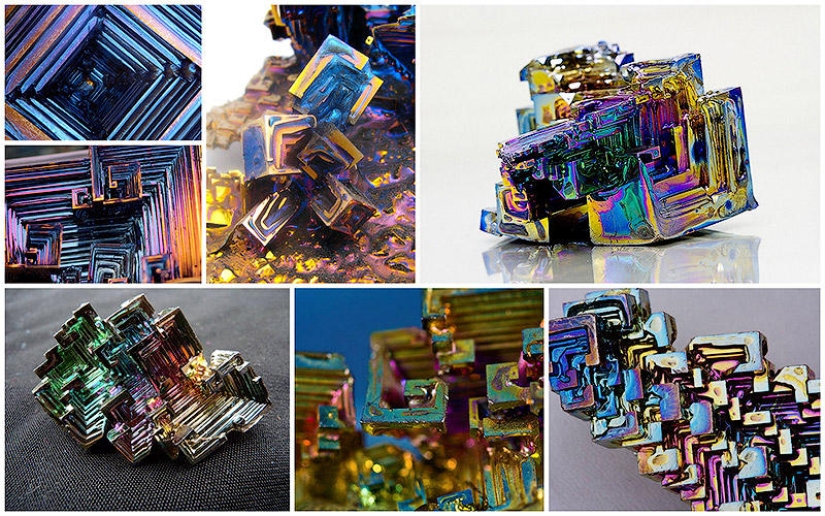
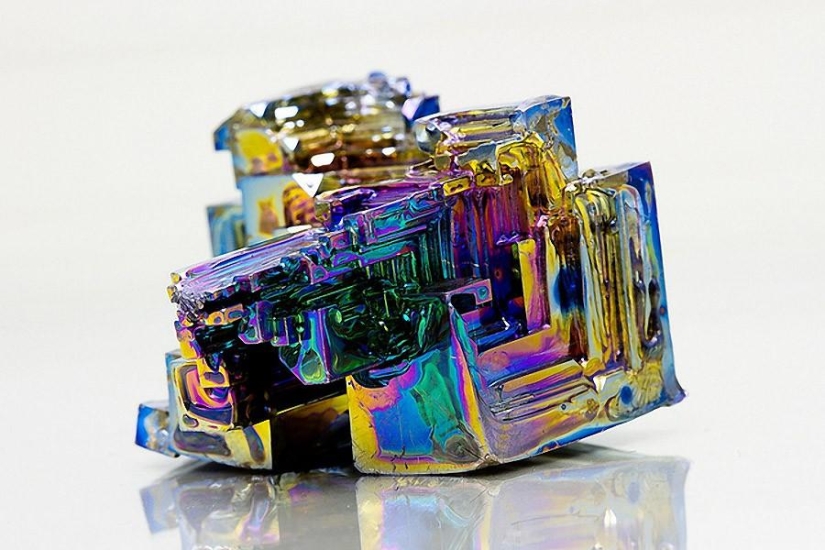
1. Bismuth salts have been used since the 1700s. for the treatment of diseases such as diarrhea, as well as to relieve the symptoms of cholera.
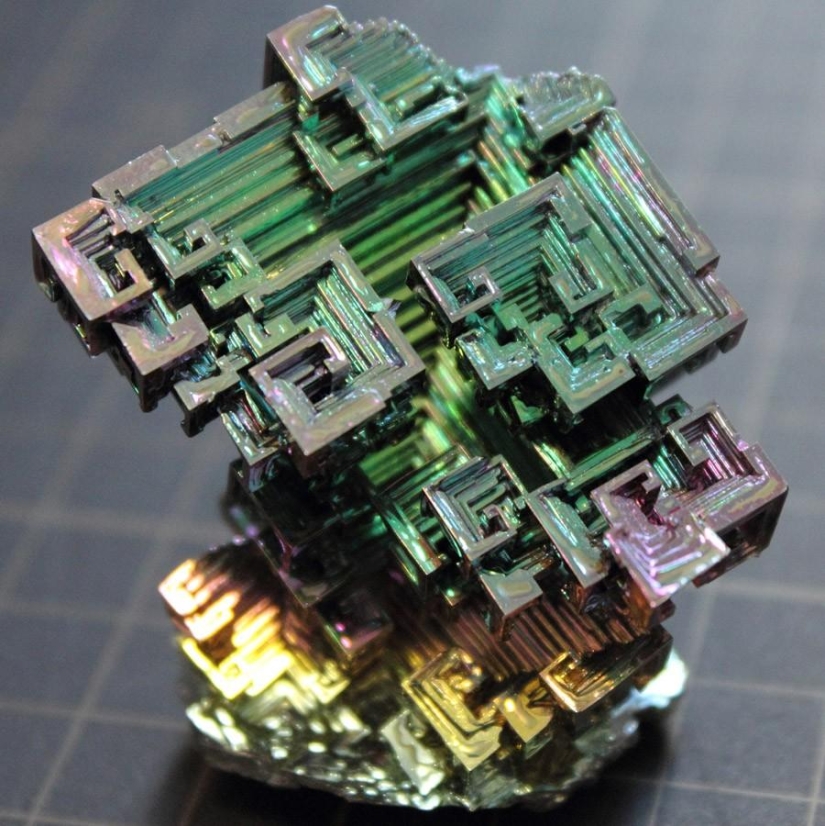
2. As part of the Pepto-Bismol preparation, he saved not only human lives.
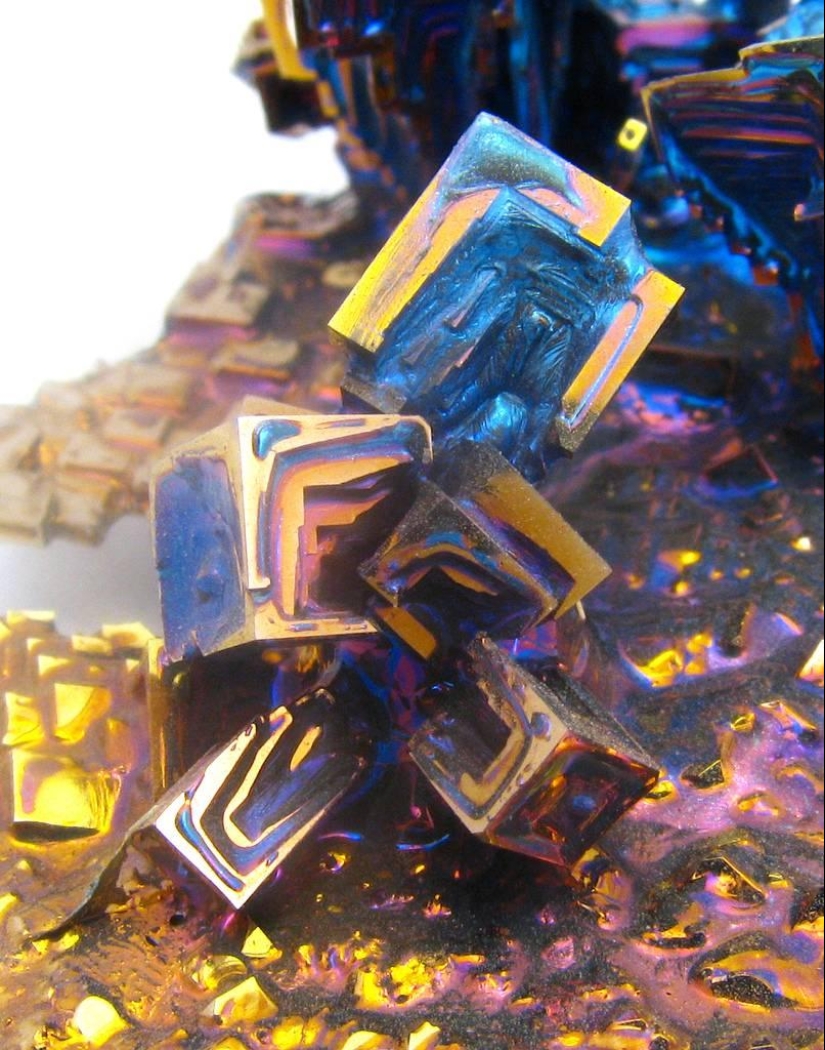
3. During the oil spill in the Gulf of Mexico, seabirds were forced to ingest this substance to flush out the oil that had entered their bodies.
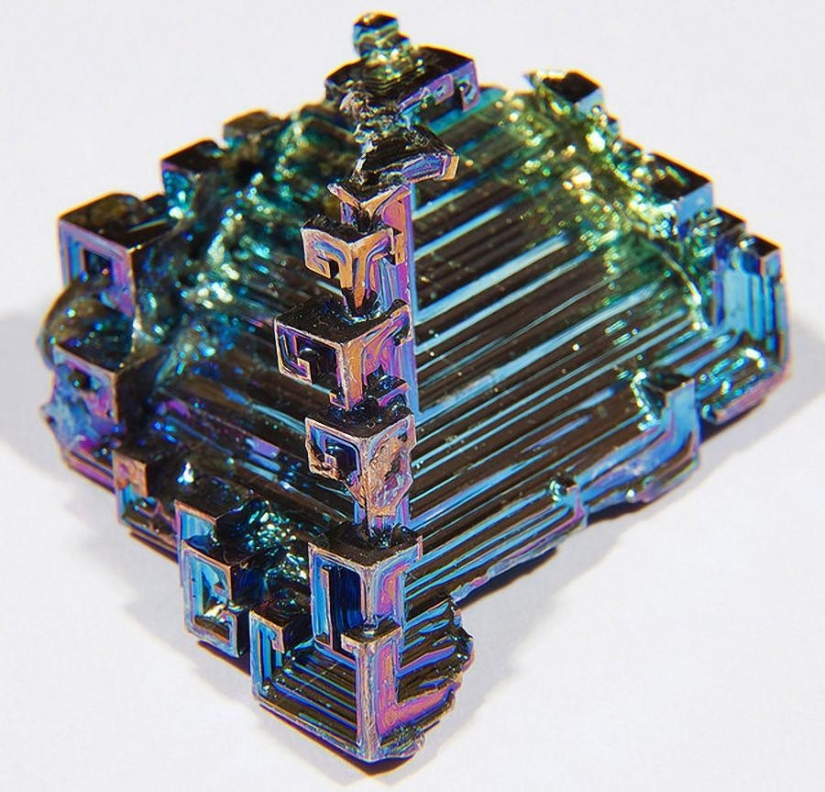
4. Although this substance has been known since ancient times, the word "bismuth" appeared for the first time at the end of the 17th century. Alchemists used it in their experiments in the Middle Ages. The miners who mined the ore called it tectum argenti. It translates as "silver production". The miners believed that bismuth was half silver.
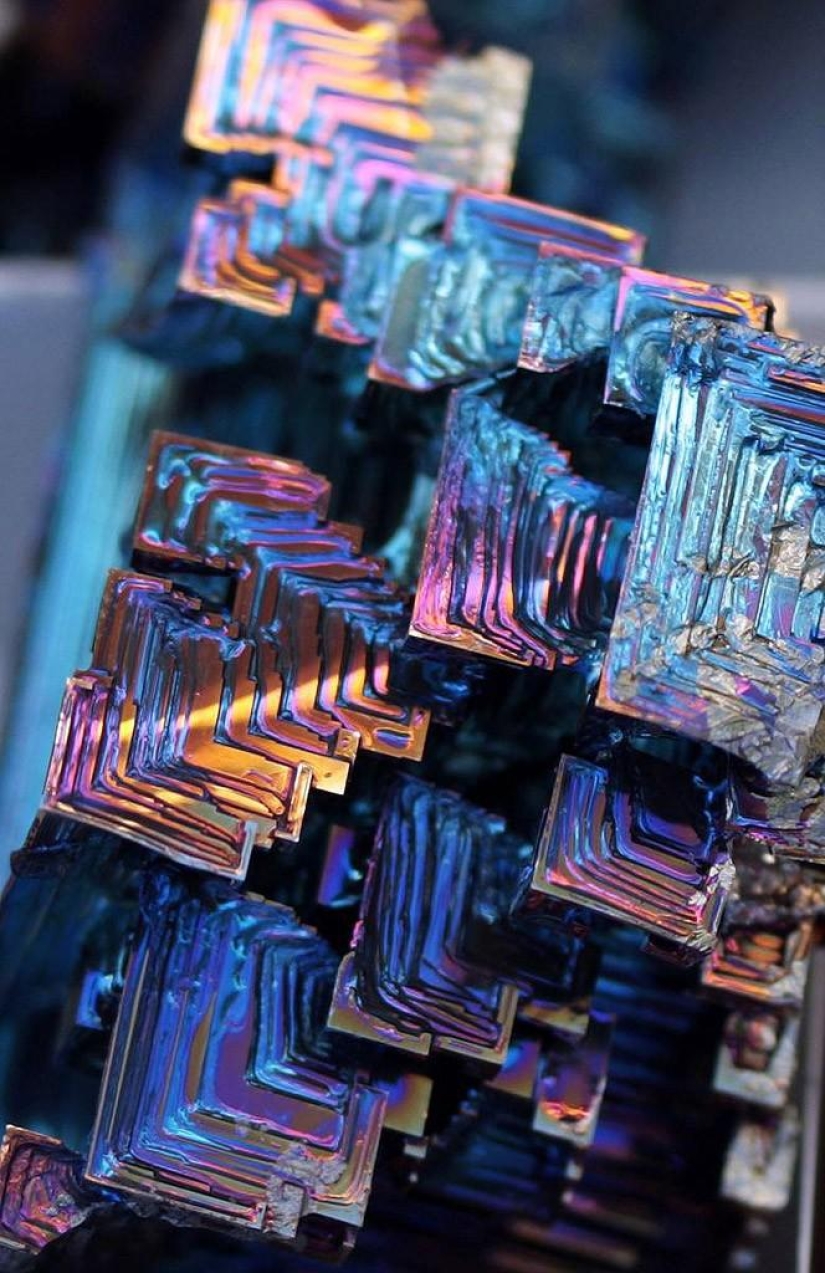
5. And the beauty of its crystals no doubt indicates why they thought so.
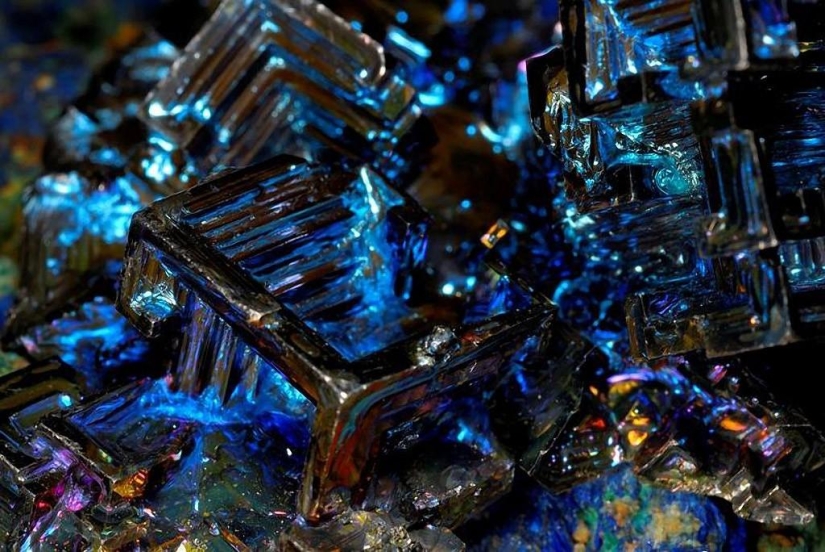
6. The name bismuth is considered to be a Latinized version of the old German word "bismuth", and only in 1546 did the German scientist George Agricola (the father of mineralogy) declare that bismuth is a separate metal.
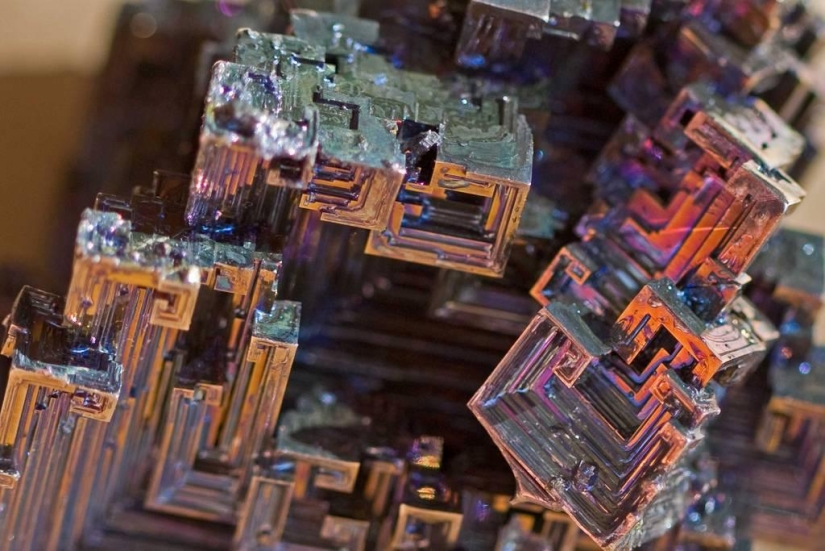
7. Bismuth was used not only in Europe: although its Andean name was lost, the Incas used bismuth to make edged weapons.
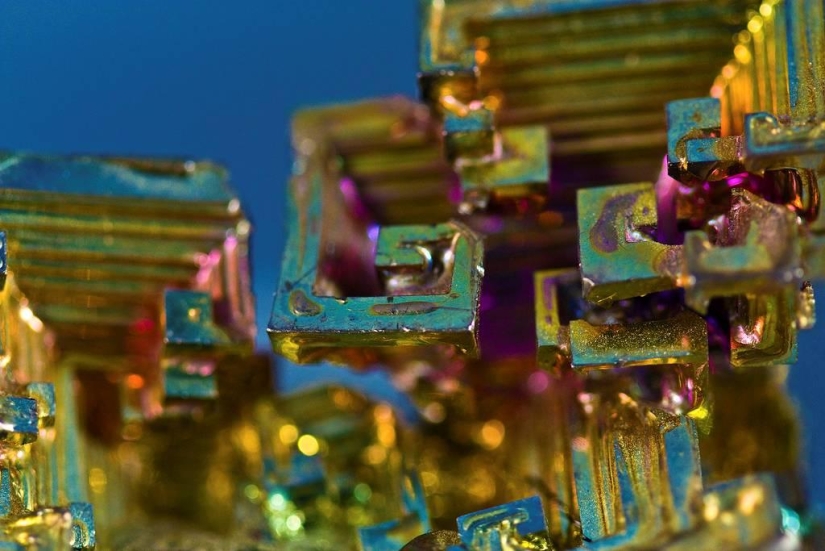
8. Because of this, the swords of the Incas were very beautiful, and their radiance was the result of iridescent oxidation - a chemical reaction with oxygen.
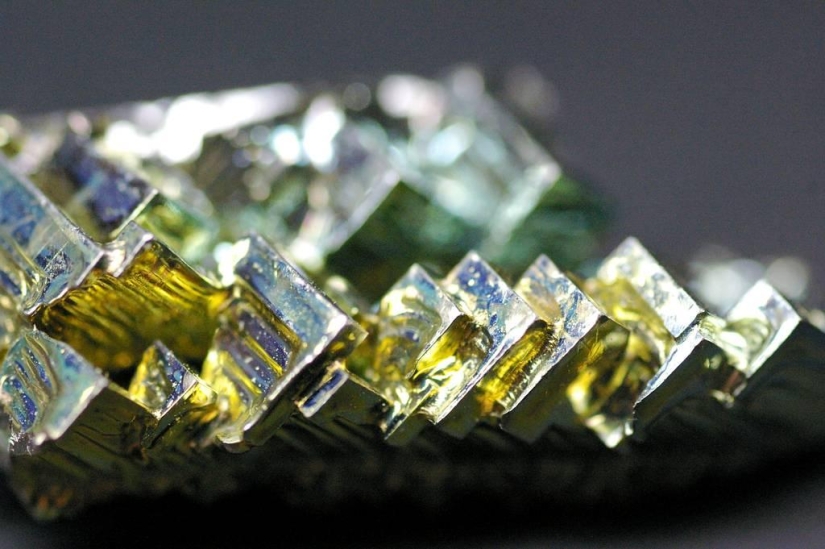
9. The difference in colors is the result of different thicknesses of the oxide layer on top of the crystal. When direct light strikes bismuth crystals, these fluctuations in thickness result in different wavelengths to interrupt the reflection. Therefore, we get a beautiful rainbow effect.
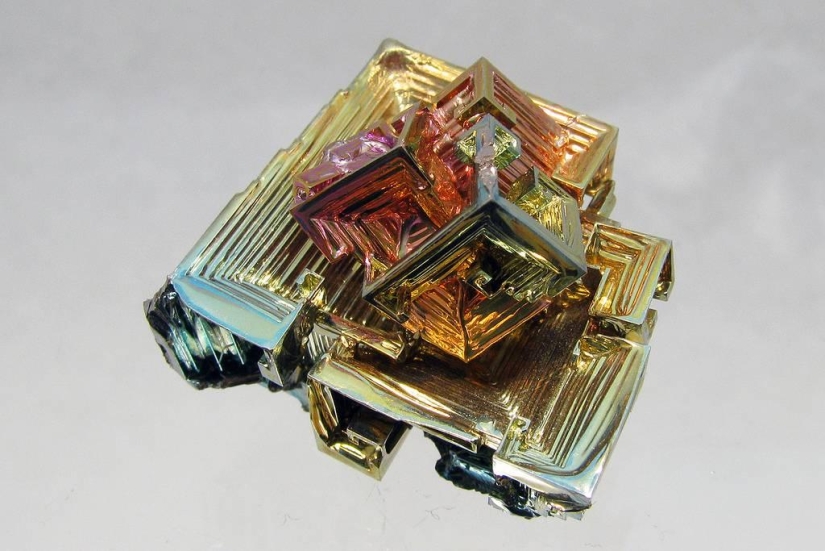
10. In the periodic table, bismuth has several neighbors (its number is 81), and if you take them inside, you can cause serious damage to health. This list includes lead, antimony and polonium. And although bismuth has a high atomic mass, it has always been considered stable (for many years it was even considered the most stable element in terms of mass).
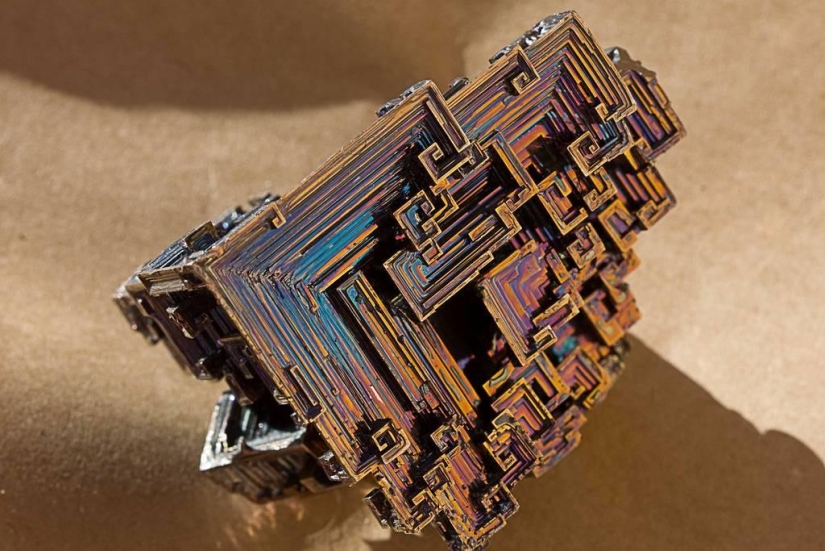
11. However, this element has recently been found to be slightly radioactive. But don't worry, bismuth can't kill. In fact, bismuth alloys have long been replacing lead (in items such as faucets for drinking plumbing systems).
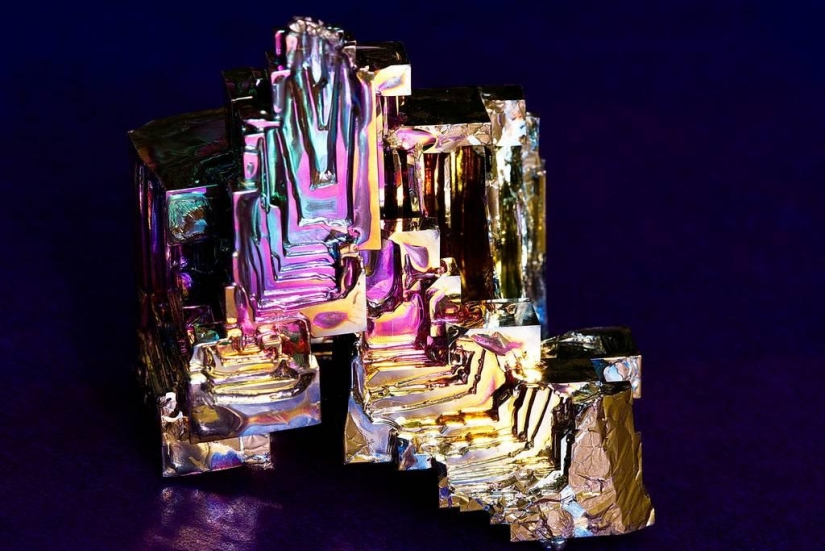
12. An ingot of crude lead contains up to 10% bismuth, and for its extraction it is necessary to go through several stages. However, after the two main processes, many other metals remain in this mixture.
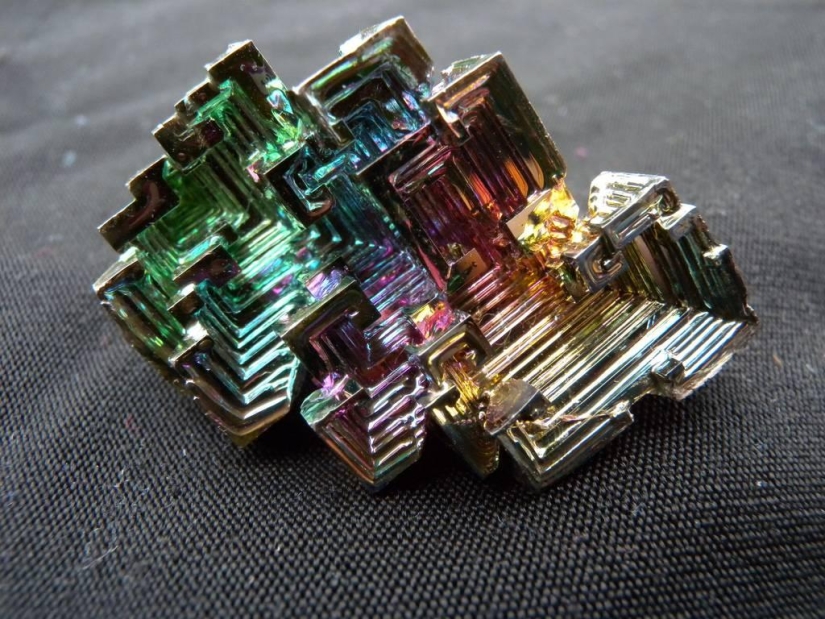
13. To get pure bismuth, you need to melt the processed mixture, and then add chlorine gas. The remaining metals are mined in their chloride form, after which pure bismuth remains.
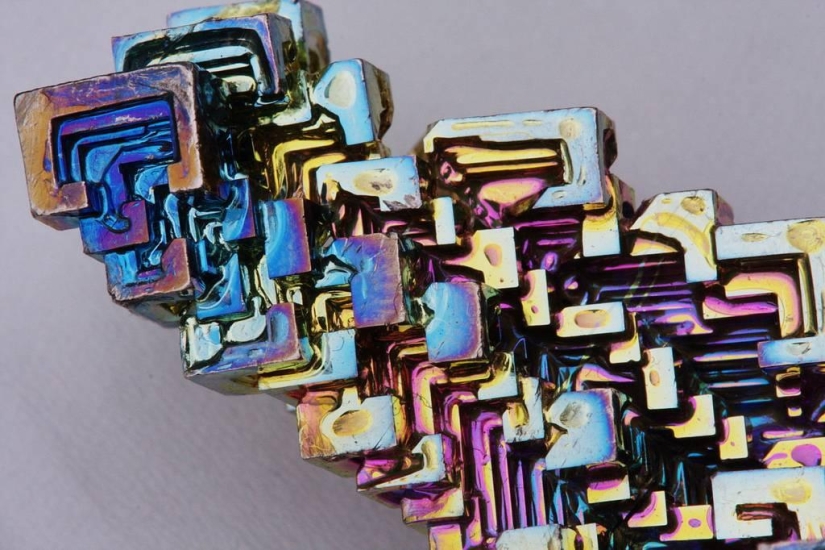
14. Bismuth has some amazing characteristics. As you know, water is one of the few substances that is denser in liquid form than in solid form.
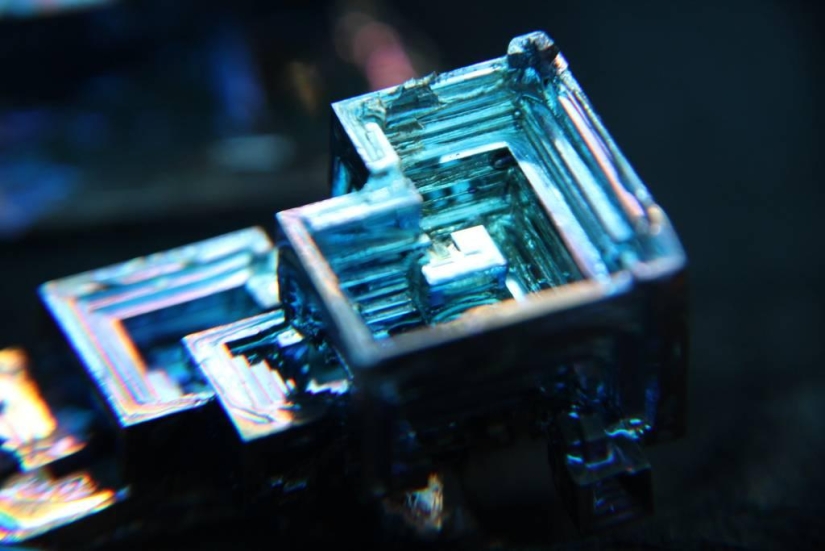
15. In this, bismuth is similar to water - in solid form, it increases by 3%.
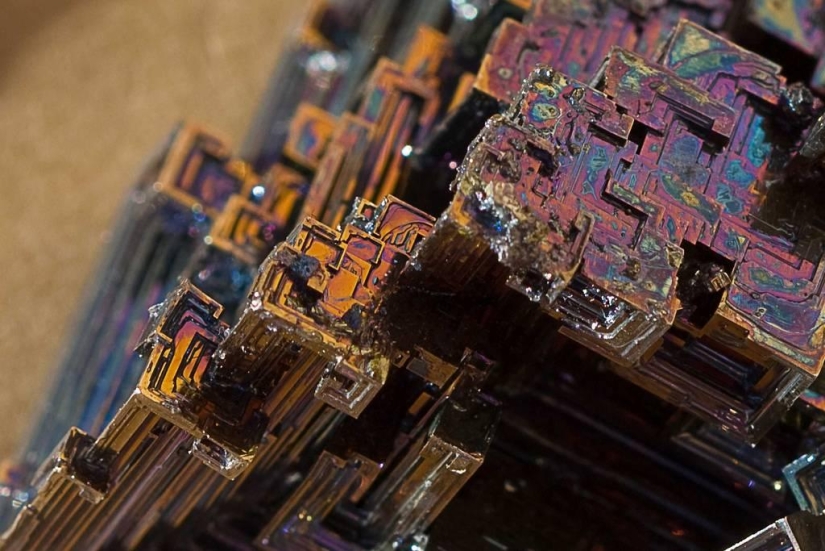
16. It is also more diamagnetic than any other metal on the planet. Diamagnetism is present in all materials - this is the property that creates a magnetic field.
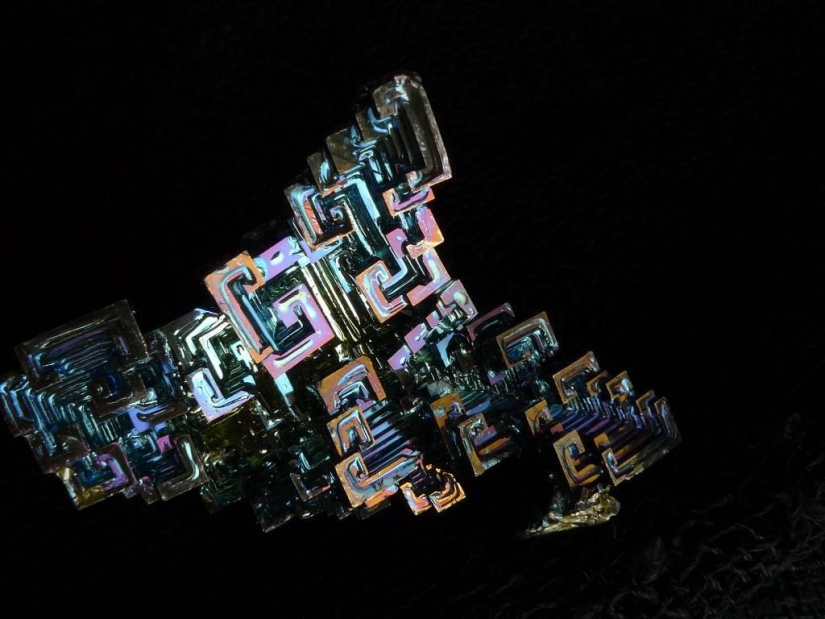
17. On the other hand, bismuth has the lowest thermal conductivity of any other metal.
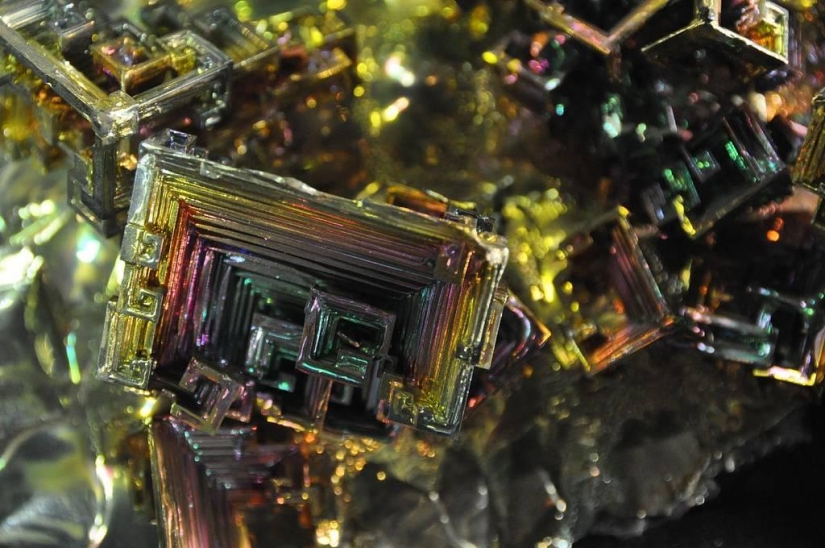
18. Bismuth is considered to have a low environmental impact. This is because its constituents are not very soluble, so in water it cannot harm people.
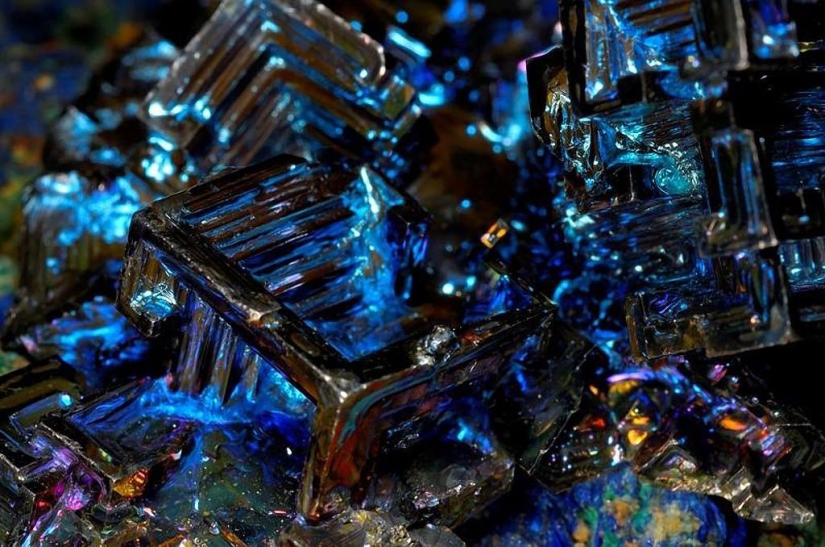
19. However, only limited research has been done on the impact of bismuth on the environment.
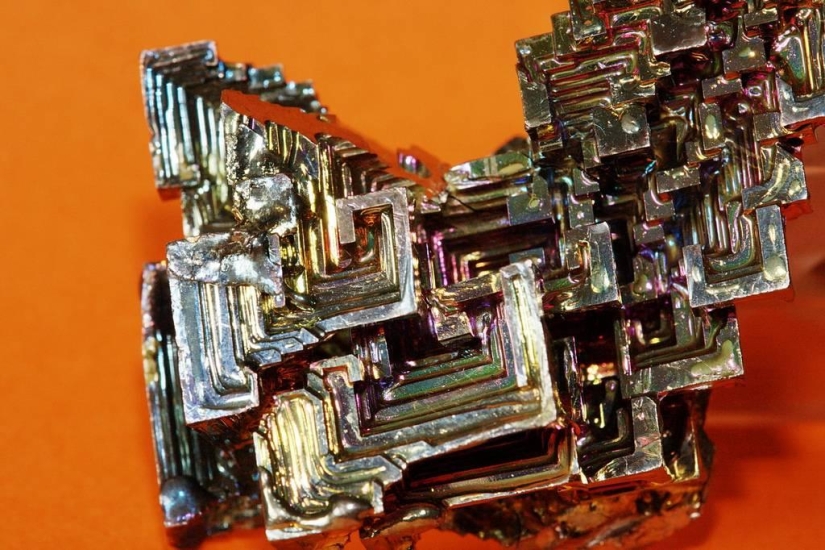
20. Although the bismuth crystals in these photographs were artificially grown, like synthetic crystals, they show this element in all its glory.
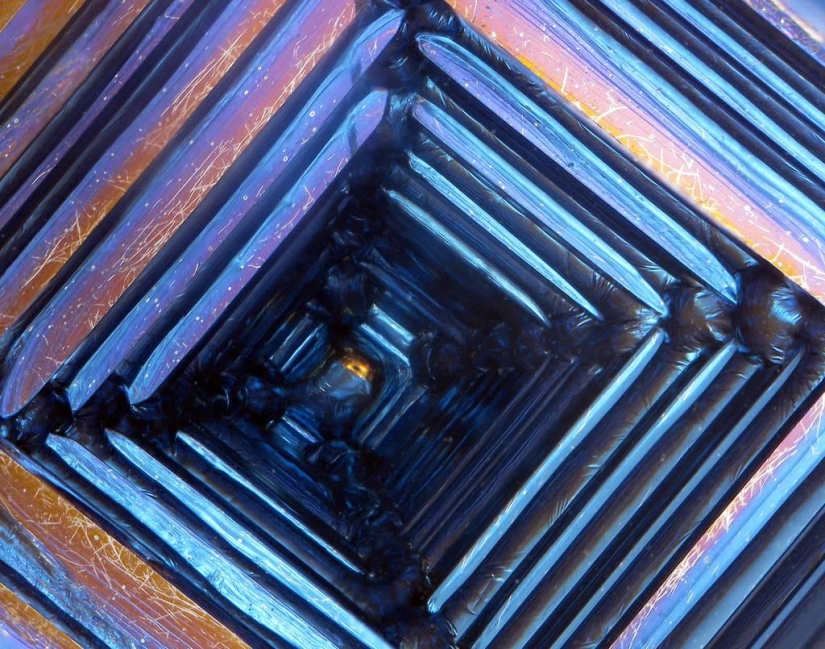
21. This is a complex, iridescent, kaleidoscopic and simply very beautiful element.
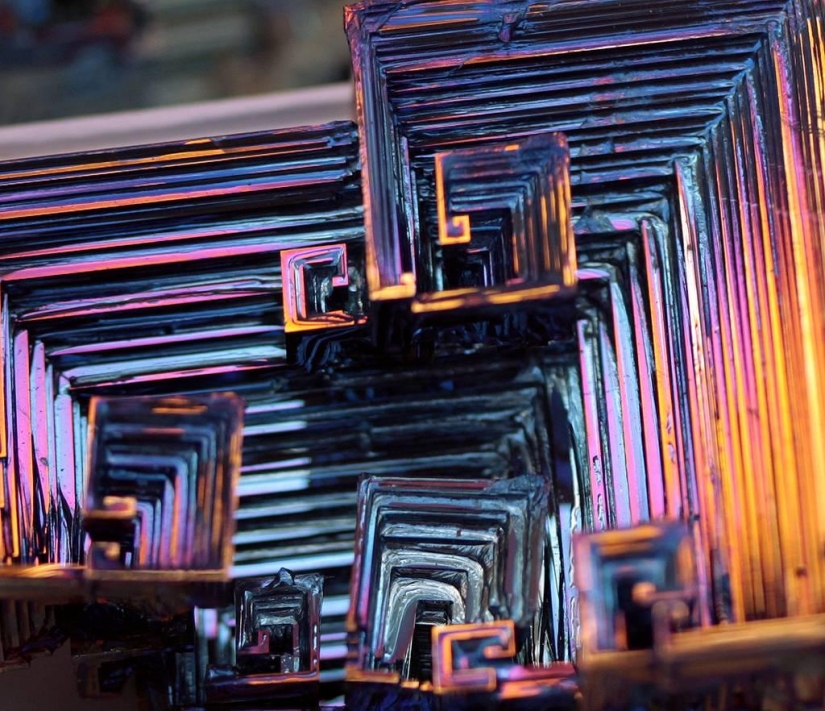
22. You can grow bismuth crystals yourself. To do this, you need high purity bismuth metal, a small propane torch, a suitable container to dissolve the metal in, and a lot of common sense.
Keywords: Crystal | Metal | Chemistry
Post News ArticleRecent articles

In the fall of 1972, Bill Yates traveled through the countryside in the vicinity of Tampa, Florida. At that time, he was studying ...

Severe cold weather does not give up its positions. We offer you to admire the magical photos of winter Europe, because snow and ...
Related articles

Everyone knows what vitamins are and why they are needed. But few people know about the existence of anti-vitamins. Even fewer ...

When in the XV century the first Portuguese landed their ships to the shores of Ghana, they were amazed by the amount of gold. It ...

Even if you've never been close to the world of science, you will not be able to tear their eyes away from these gifs is now ...

Vladimir Lyubarov is an artist from the countryside who paints pictures of real life. But he brings amazing characters, birds, and ...